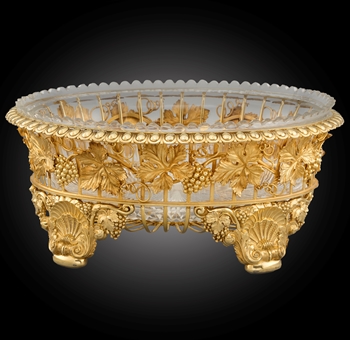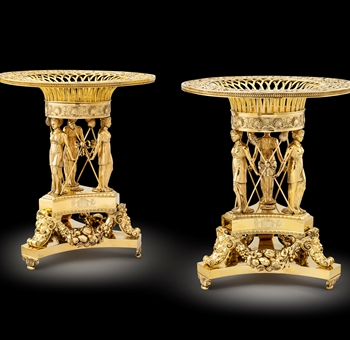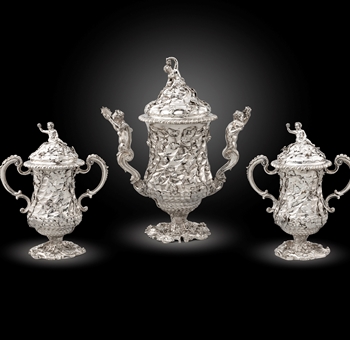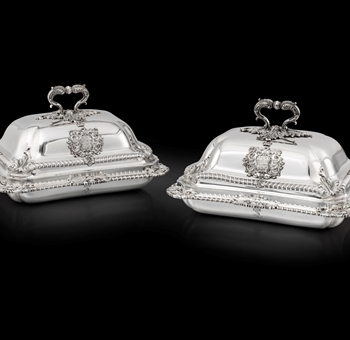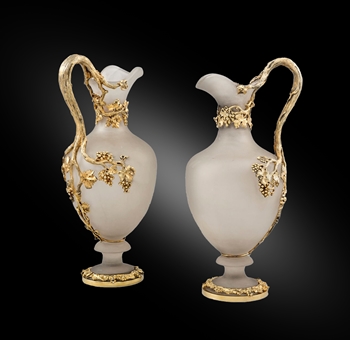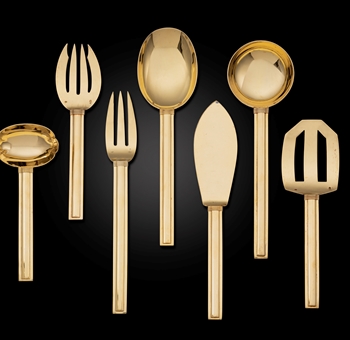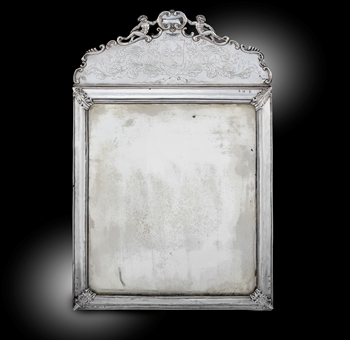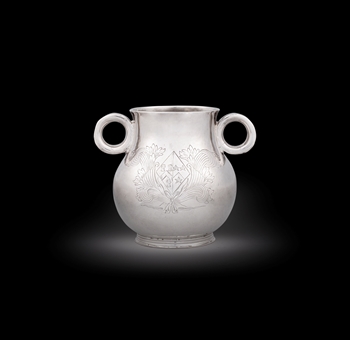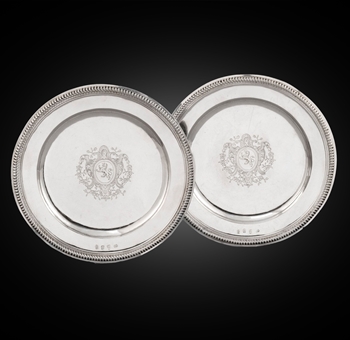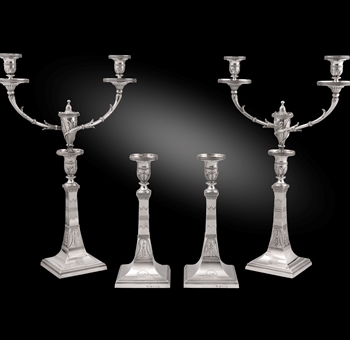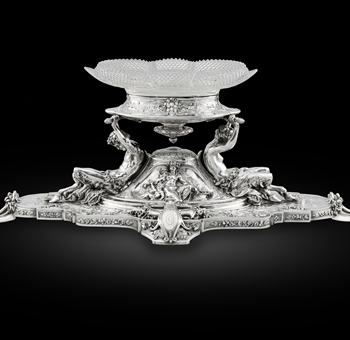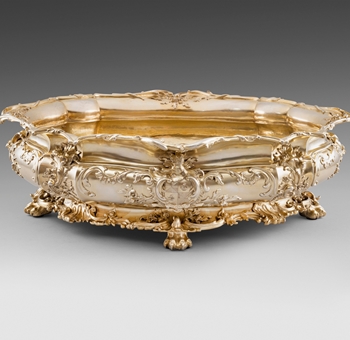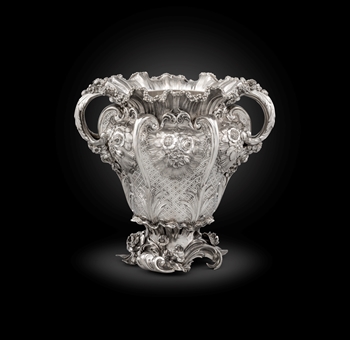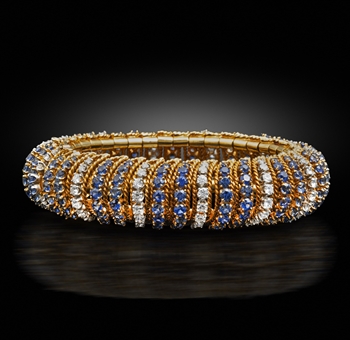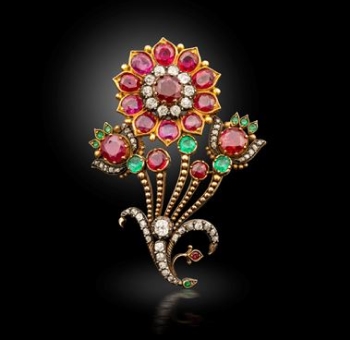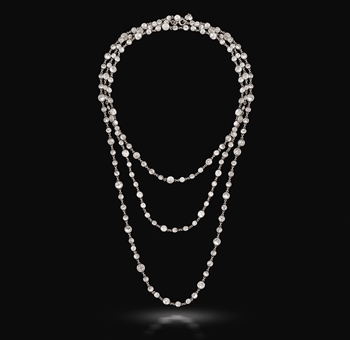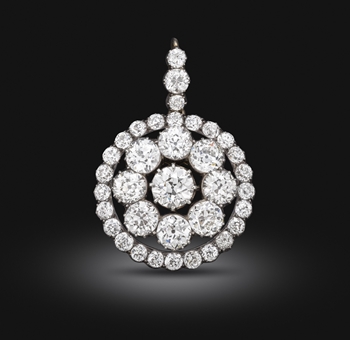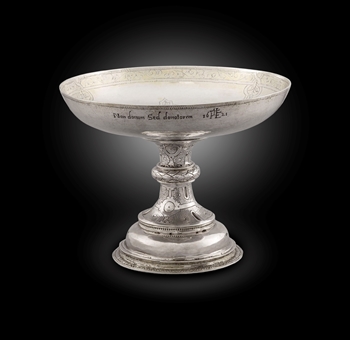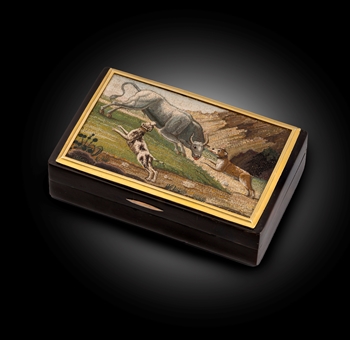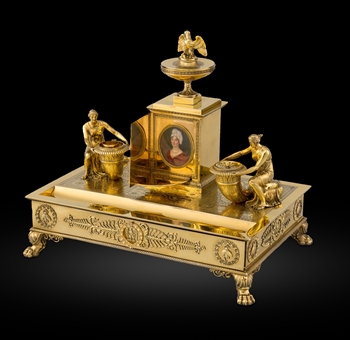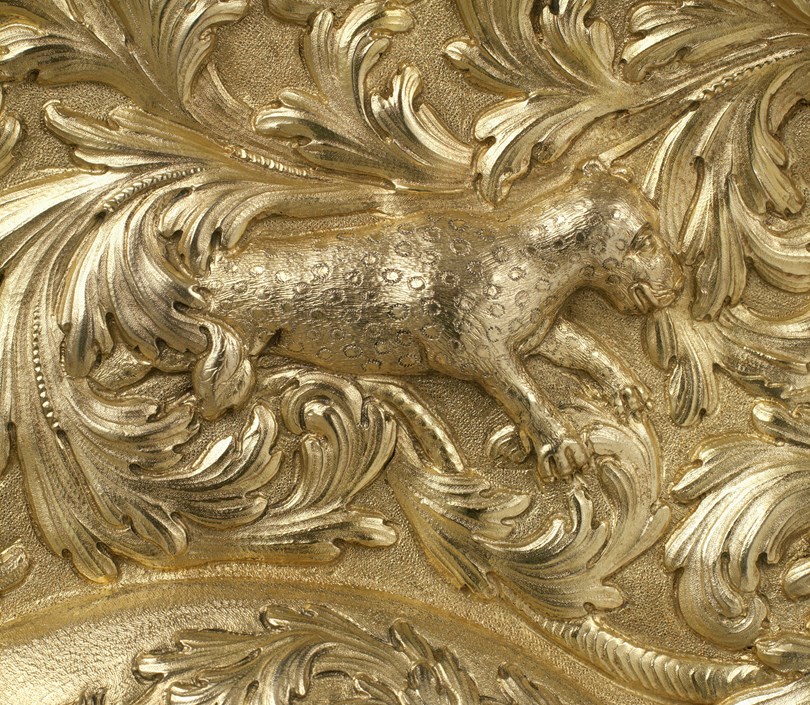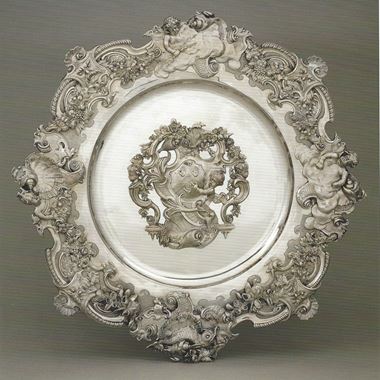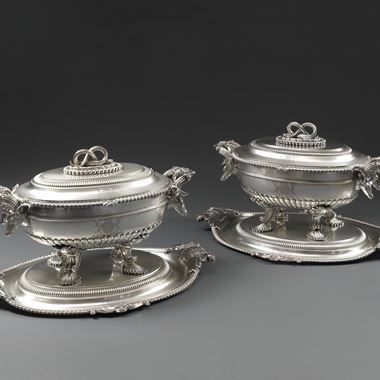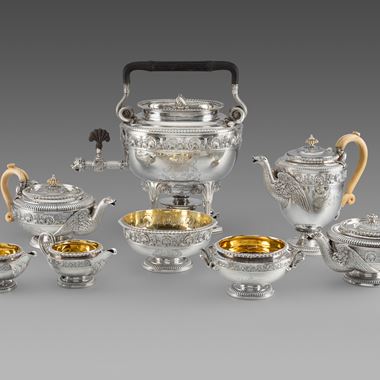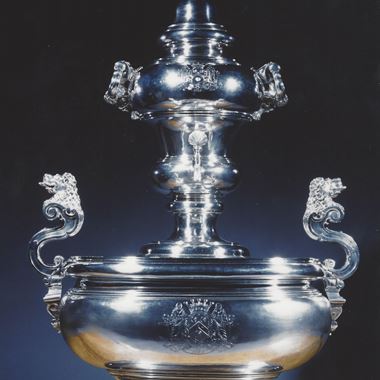The circular dish is embossed and chased in high relief with scrolling acanthus foliage, flower heads and tulips interspersed with birds and animals. The centre has a raised boss chased with a coat of arms, helm and crest surrounded by foliate mantling. The arms and crest are those of Jeffreys for Sir George Jeffreys.
This monumental dish is the most significant piece of Restoration court plate to have emerged on to the market for many years and is of the greatest possible historical interest and a truly remarkable survival. It is of the utmost grandeur and its state of preservation is nearly unprecedented. That the original owner of such a piece can be identified is extremely unusual and that this figure should be of such historic importance and renown is extraordinary. It is a vigorous and confident statement of wealth designed to impress the viewer with the status and grandeur of its owner and says much about Jeffreys who must have commissioned it shortly after his knighthood; it portrays a man who had established his legal career and was moving in the highest of court circles with both great influence and power.
The dish bears the arms of Sir George Jeffreys (1648-1688) who was knighted in 1677 so the dish must date from between this period and 1683 when he was created Baron Jeffreys of Wem. Throughout his legal career he carefully cultivated advantageous friendships, at first in the City with leading merchants and city figures such as the Lord Mayor Sir Roger Clayton and then within the court of Charles II with figures such as the Earl of Danby and the King's mistress, the Duchess of Portsmouth. Paul D. Halliday in the Dictionary of National Biography records that following his knighthood the King and his mistress dined with Jeffreys at his home, a single honour, and the lavishness of the entertainment can only be imagined. Further preferment in the form of the office of Recorder of London followed; it was at this time he acquired an estate at Temple Bulstrode in Buckinghamshire. Later his career was to become notorious, both for the trial of Titus Oates following the failed Rye House plot against Charles II at which he presided and for the ‘Bloody Assizes’ at which he was known as ‘Hanging Judge Jeffreys' for the sentences which he handed out to the supporters of the Duke of Monmouth (the illegitimate son of Charles II) following the failed rebellion of 1685 against James II. The end of his career coincided with the struggle of James II to retain the crown; as catholic influence grew at court, so Jeffrey's influence wane when finally James fled the country Jeffreys initially attempted to do the same but was committed to the Tower of London for treason where he was to die in 1689.
The dish does not appear in Jeffrey's will but it is described in that of his grand-daughter Henrietta Louisa, Countess Pomfret in the following bequest: "I give to my granddaughter Hennrietta Anne Dawson my great wrought silver dish” Henrietta died in childhood.
Very little silver of this grandeur survives from this period. The significance of the dish can be compared to the great wine cistern of 1677 bearing the maker's mark of Thomas Jenkins in the Victoria and Albert Museum (Vanessa Brett, The Sotheby's Directory of Silver 1600-1940 1986, no 469) or the pair of great two handled fountains at Welbeck Abbey (E. Alfred Jones, Catalogue of Plate belonging to the Duke of Portland, K.G, G.C.V. 0. at Welbeck Abbey, 1935, p. 85, pl. XI). Another comparison might be the lavishly chased pair of Charles II wall sconces at Burghley House (Burghley House, Silver Exhibition 1984, p. 34). Its stature can also be compared to that of some of the Royal chapel plate such as the massive silver-gilt feathered flagons (Timothy Schroder, Silver and the Church 2004, p. 24, pl. 37) or a large heavily chased alms dish from the Westminster Abbey (op. cit., p. 23, no. 360. The Armory museum of the Kremlin in Moscow also contains some pieces of grand Restoration display plate given to Tsar Alexei Mikhailovich by the Earl of Carlisle as gifts from Charles II. These include a flagon or pilgrim bottle of 1663 by Robert Smythier (Barry Shifman and Guy Walton (editors), Gifts to the Tsars 1500-1700, 2001, pp. 243-4, no. 64, a pair of standing cups by Francis Leake (p. 242, no. 63) and a fruit dish of 1663 with maker's mark TH (p. 245, no, 65), Charles Oman (The English Silver in the Kremlin 1557-1663, 1961, no. 27) illustrates one of a pair of great livery pots bearing the maker's mark HG of 1663. What all of these pieces have in common with this dish is that they were made to create an overwhelming sense of wealth and grandeur and to impress the viewer with the status of the owner.
Natalie Siselina (English Silver Treasures from the Kremlin, 1991, p. 130) describes the vigorous floral decoration that originated in Holland during the 1650s which this dish and Kremlin plate have in common: "Fashionable silver began to be embossed with ornamentation of a naturalistic character consisting of outsized flowers (most often double tulips and poppies and foliage. Tightly packed decoration could not have corresponded better to the English love for covering a surface with ornamental motifs. The new approach to ornamentation had a telling effect not only in the change to a larger scale but also in the reinforcement of its own characteristic element. The entire surfaces of the Charles ll articles are filled with the same pattern that almost smothers their form ...Peculiar to English silversmiths is the depiction of animals alongside the plants...".
Sir George Jeffreys (1648-1688) and thence by descent to his grand- daughter Henrietta Countess of Pomfret (d. 1762) and thence by descent to her grand-daughter Henrietta Anne Dawson who died in childhood
You May Also Like




